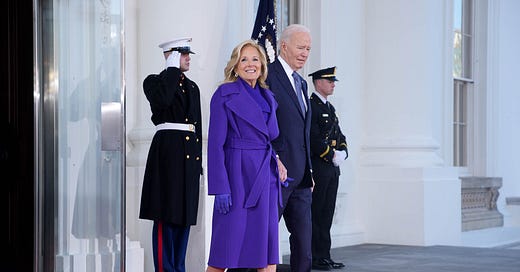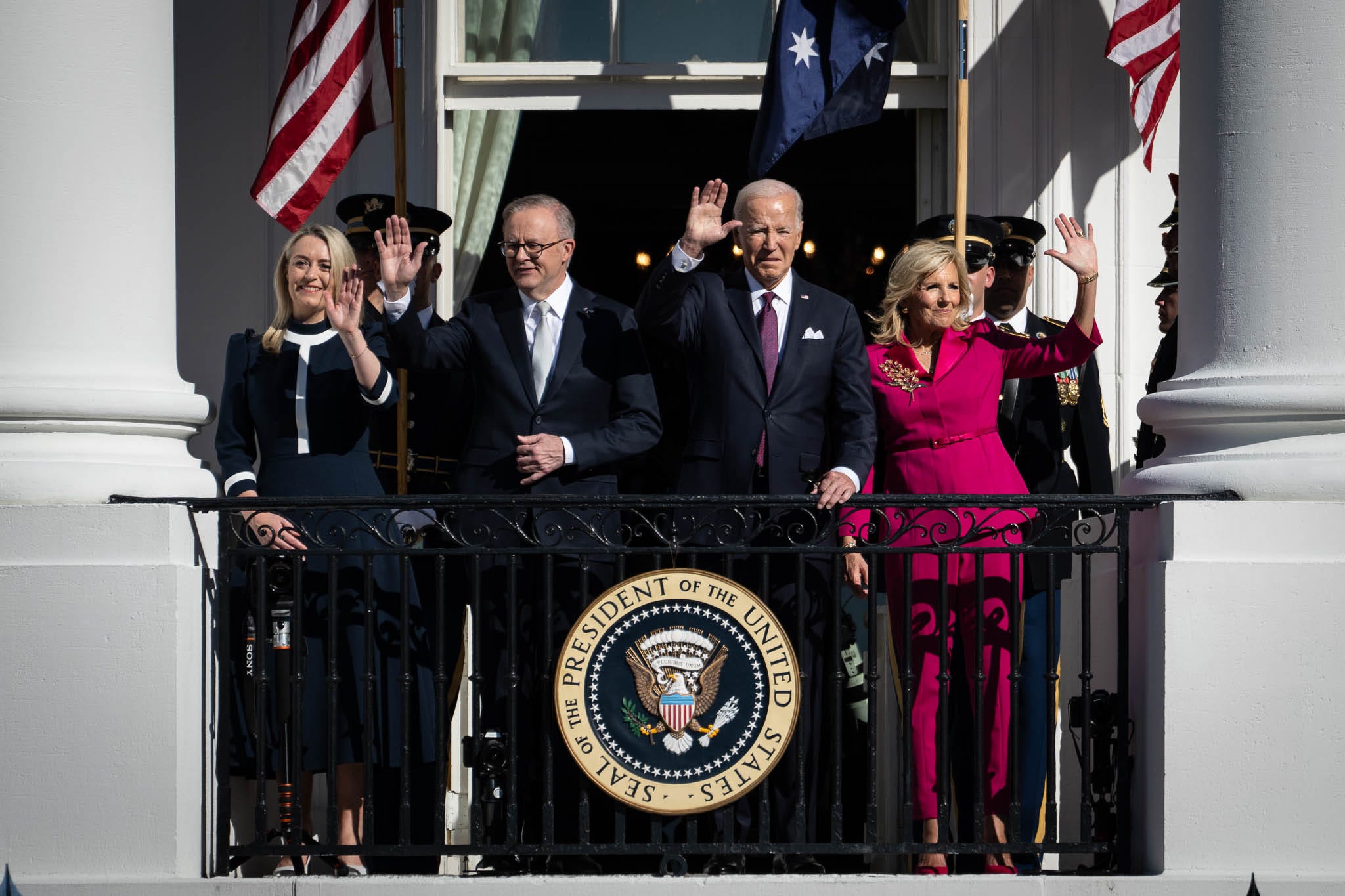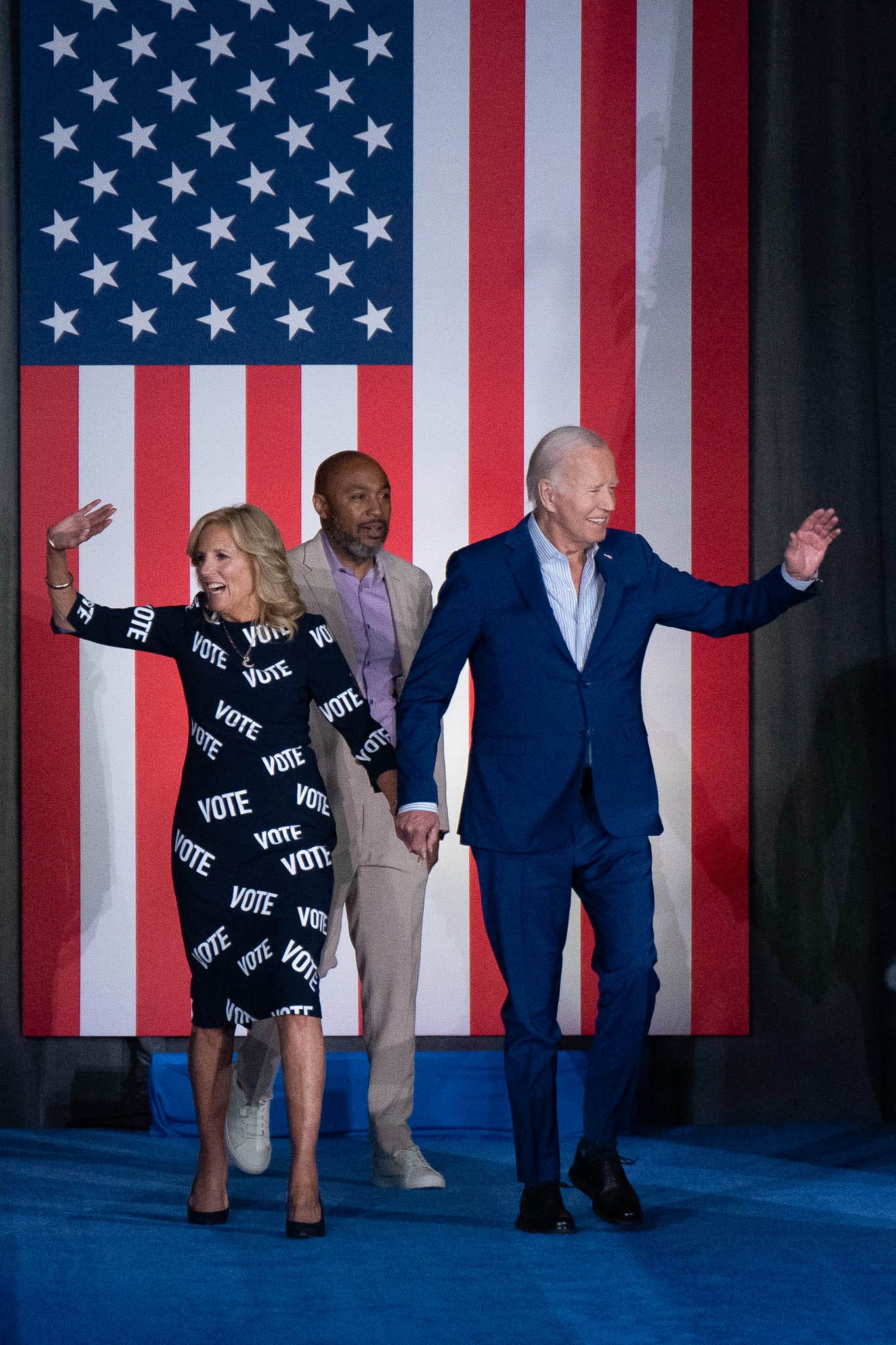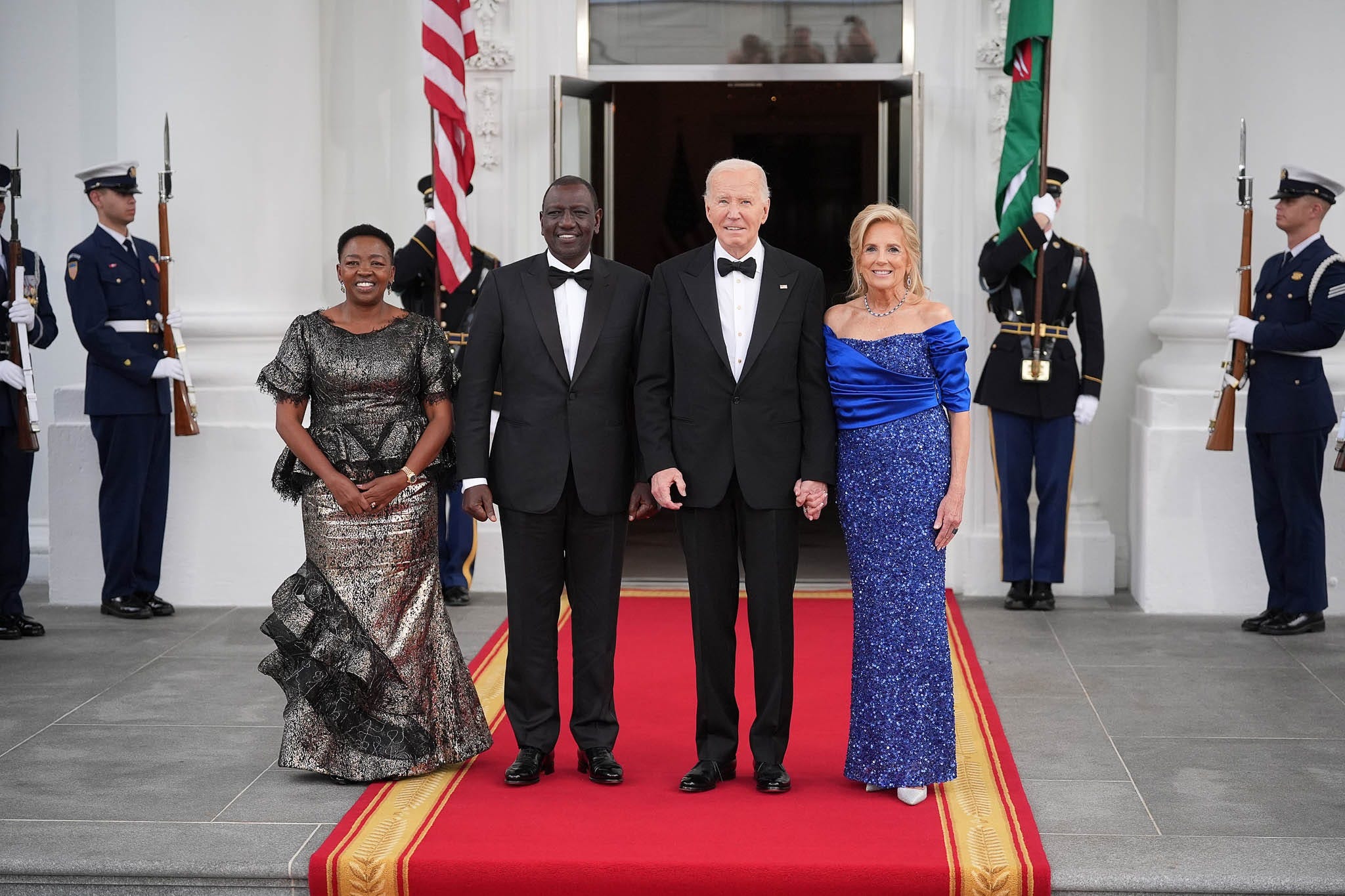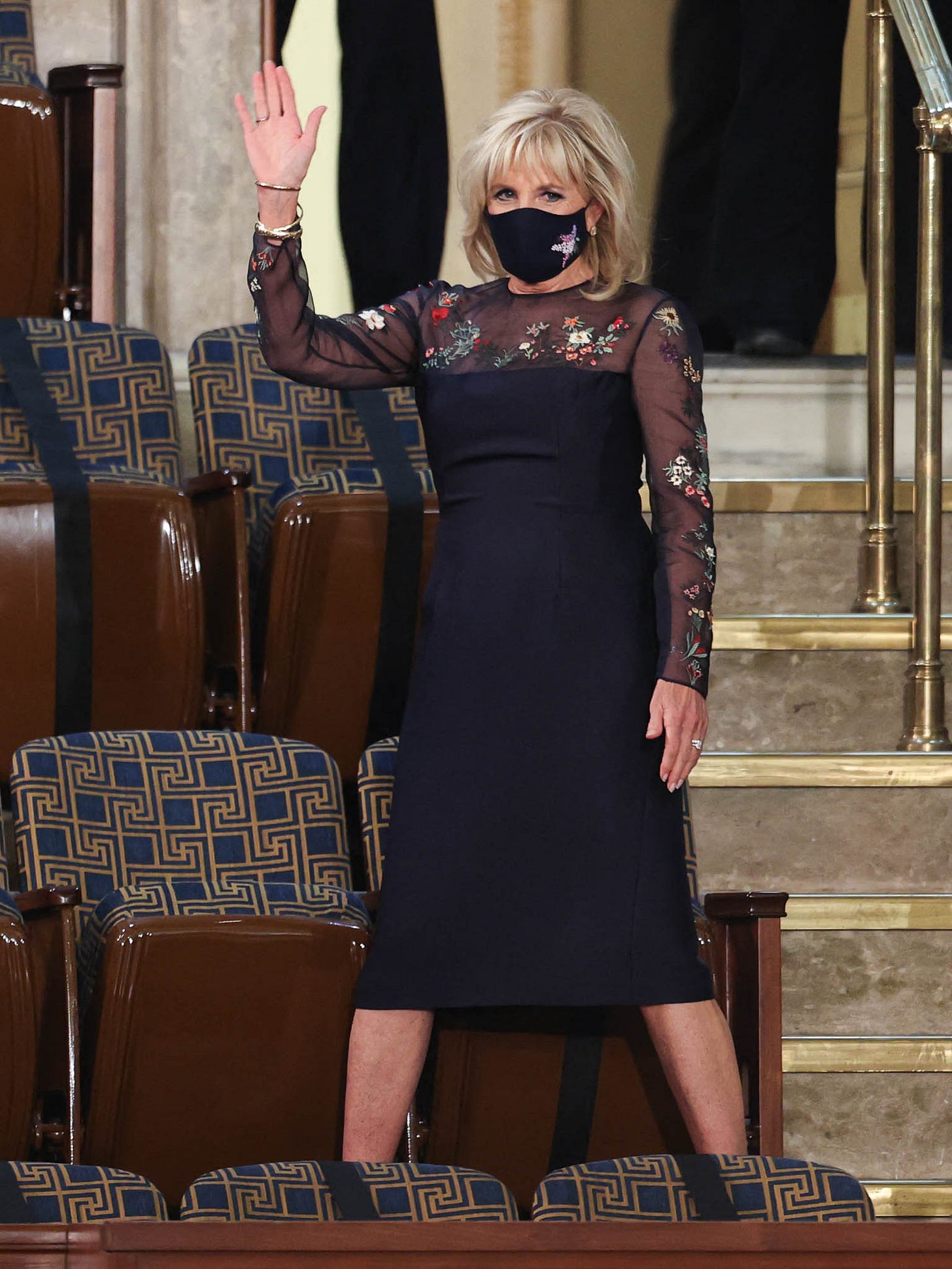Jill Biden’s Stylist Opens Up
So many thoughts from Bailey Moon on four years of dressing the first lady.
Last week, after the inauguration, I slid into Bailey Moon’s DMs. I have long known him to be the quiet hand behind First Lady Jill Biden’s fashion and wondered, now that his high-profile client had moved out of the White House, might he be up for a chat? I then checked my email, only to find a note from Moon saying hello.
Our resulting conversation stretched to an hour and a half, a fascinating deep dive into his work with Dr. Biden. Moon reflected on the evolving idea of American style and detailed the logistics of dressing a public figure (including what was behind the first lady’s penchant for repeats). We talked about why it was important to him to work with an array of American designers, what he thought of last week’s inaugural fashion, and why he wants to further the connection between politics and style. Keep scrolling for his thoughts on seven of the former first lady’s standout looks.
This is easily one of my favorite interviews of late. It was validating to hear a stylist of Moon’s caliber outline his vision, with all the intention that is at the heart of So Many Thoughts. I hope you enjoy it as much as I did.
💭 Looking back at Dr. Biden’s style, did you have a favorite look or approach? Please click below to share in the comments.
This newsletter will likely get cut off in your inbox. Click here to read it in full.
Bailey Moon on Styling First Lady Jill Biden
Please note: Our conversation has been edited and condensed.
Before we dive into the first lady’s style, tell me a bit about your background. Where did your interest in fashion come from?
Bailey Moon: Growing up gay in South Carolina, I was bullied a ton. The only outlets for me were fashion and dance. Dance was the physical thing that put me in spaces with more like-minded people. I did ballet from the age of eight; by 13, I was at the National Ballet School of Canada. I got into Juilliard but I dropped out on day one — I had a gut feeling that it was not my path.
I ended up at NYU thinking I wanted to be a fashion journalist. Right out of school, I interned for several editorial stylists. Then an opportunity came up at an agency to do PR for Rodarte. Celebrity dressing was such a big part of the brand’s strategy. I was running around New York, going to Chloë Sevigny’s apartment and fitting her.
As I grew into that role, I was poached by Gabriela Hearst to come in-house and work for her. I experienced working with a lot of women at the top of their fields. That was a big part of her MO, not just dressing celebrities but dressing CEOs, art gallery owners, and people in the political world.
When did you first connect with Jill Biden?
In 2017, Dr. Biden was being honored by Save the Children and one of our friends who worked there asked if Gabriela could dress her. It sounds silly, but I don’t know how else to describe it: I had one of those a-ha moments. I felt that something was going to come from that meeting that day.
I kept in touch, you know, if they ever needed anything. When Dr. Biden was promoting a book, they asked if I would help curate a few things. I reached out when the campaign launched and said, “Please let me know if I can help or connect you to friends at brands.” For the Democratic National Convention [in 2020], they said, “Might you have a few ideas of anyone that might want to work with us?” I said, “Sure, give me a day and I’ll come back to you.” I had a friend come over and we worked from dusk until dawn on this hundred-page deck. It was my vision — from the DNC through to her becoming first lady — of what designers I saw her wearing and what messages she would send.
We never had a formal conversation, but since that day it evolved into an advising partnership. It really took hold during the inauguration period, when myself and a tailor were in Delaware. This was peak Covid, post-Jan. 6, [and I was] outfitting the entire family. It was probably the hardest thing that I have ever had to do, to dress 10 people in two looks [apiece], within the span of a week or so. It grew from there, in a really organic way. Everything with the Bidens was these building block steps.
[EH note: You can read all about the first lady’s 2021 inauguration fashion by clicking below — one of my all-time fave newsletters.]
Tell me more about that deck. What was your vision for Dr. Biden’s style?
It was grounded in this idea of: What is American style, and how do you pay homage to the classical ideals of the past while also keeping it modern and tapping into all of the design talent in the country? It was a balancing act of creating something that feels referential to how the role is perceived, from the public standpoint, but also push it a little forward, make it a little more modern, make it a little bit more fun.
What aspects of an outfit did you take into consideration for Dr. Biden?
When possible, we would ask: Is this an American designer? Is it a diverse designer? Do they have something interesting to say? Then we would consider whether there was an opportunity to send a message — whether it be very obvious or very subtle — to use the clothes to talk about whatever we were trying to put forward.
But it always came down to color: What’s the color and is she going to look great? So many of her outfits were jewel tones or bold colors. When you are in a sea of navy suits, how do you stand out as first lady?
In what ways did you send messages through the clothes?
So many times that was realized through florals. The inauguration was the first touchpoint. The overlay of the ivory Gabriela Hearst dress — the sleeves and the neckline and even the mask — had flowers from all 50 states, the territories, and District of Columbia hand embroidered by Laura Weber in New York. The Delaware flower was always closest to Dr. Biden’s heart.
The blue and white sunflower dress from Oscar de la Renta that she wore when they welcomed the First Lady of Ukraine was, again, a way to advocate the bigger picture. For the Australian state visit, she wore a pink Carolina Herrera suit with a brooch of a wattle, which is the Australian national flower. It was a cool little homage that not many people picked up on, another way to do diplomatic dressing.
And then there were more obvious messages, like the ‘Vote’ dress.
Definitely her idea. Dr. Biden saw someone at a fundraiser wearing a runway version of the dress and liked it. I reached out to Christian Siriano and he adapted it to the version that she wore. In pivotal moments, she could be more forceful in driving the message home, knowing that what she wore was going to get attention. And that dress certainly got a lot of attention that day.
Sometimes it’s easier to be literal. She wore the “Love” blazer during a G-7 visit. Everyone was like, “How can you not compare it to Melania’s ‘I Don’t Care’ jacket?” This was the first lady spreading messages of unity and love — and what a stark difference that was.
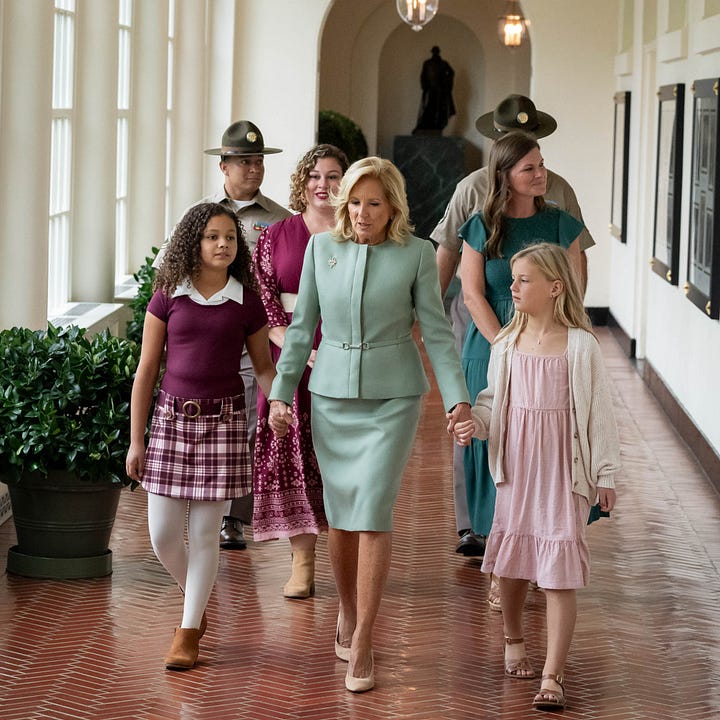
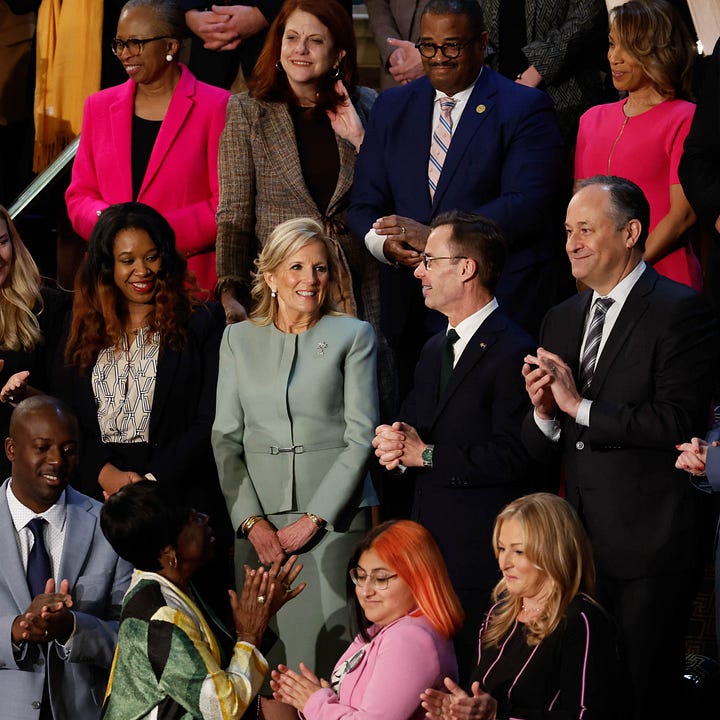
Dr. Biden was known for repeating her outfits. What was the strategy there?
It was a deep appreciation for the craft and promoting that idea of: If you love it so much, give it another chance to shine. I’m pretty sure that almost every single thing in her closet had at least two wears, except for the inaugural looks because those ended up in the museum.
Talk about the logistics of the job. Did you move to DC?
I stayed in New York. I would go down there probably once or twice a month. Meredith [Koop, who styled First Lady Michelle Obama] was there every day as an aide [during the Obama administration] picking out the outfit of the day. I was more of a traditional stylist, a strategist. I curated the wardrobe.
You made sure she had enough choices for her day-to-day needs?
Exactly. And then she would go into her closet every day and pick things out. A lot of those Schiaparelli suits had multiple wears because she gravitated towards them. She loved them.
That sounds delightfully normal?
That was one big theme of the whole process: They’re just normal people. She was the first first lady to maintain a paying job [as a teacher] outside of the White House, which is why we had so many Theory suits in different colors. She would wear them to school and then wear them to an event. We were always thinking about what makes sense for the different environments.
What was the process like for higher-profile moments?
For bigger events, we would add in newness. She was very involved and cared deeply. I have some clients who want me to show up and say, “This is what you’re wearing.” Dr. Biden was definitely someone who was more invested in the process and the choices that were made. When it was custom, I took her through the process and she was involved in picking colors and fabrics.
The president’s tie often coordinated nicely with the first lady’s attire. Did you have a hand in that?
As you can imagine, the man has 500 ties. We always tried to match it in a not matchy-matchy way. He had a senior aide and she had a senior aide and I talked to them more than I talked to anyone that I know — more than my parents. They are not fashion people, they are government people. I couldn’t be there every day and, especially in these final moments when they were getting dressed, they were really great partners. It was a team effort, everyone coming together on one image that was being put out.
Was the fashion industry receptive to Dr. Biden?
A hundred percent. The community was really supportive and helpful. I never got a no. But I was specific in who I was asking, who made sense. There are so many young designers I really love and believe in, but some of them can’t wrap their head around putting a sleeve on a dress.
A lot of resources go into designing and making custom clothes. I tried my best to be respectful in what I was asking for and making sure that it would most likely be worn. Dr. Biden wore a lot off-the-rack and things that were adapted [from existing designs].
You’ve hinted at the range of designers you worked with. Why was that important to you?
I would often look at [the First Lady of France] Brigitte Macron, because she always wore Louis Vuitton and she always looked perfect. You do go: Ok, well, I know that Ralph [Lauren] and Michael [Kors] can constantly turn out really polished, chic looks — and we could have kept it at that. But I knew that Dr. Biden’s interest in fashion was so much broader than that.
We touched a lot of different designers. She wore Monique Lhuillier, Tory Burch, Tanya Taylor. She carried a Larroudé purse once. There was Victor Glemaud during the campaign, Brandon Maxwell, Jonathan Simkhai. Cristina Ottaviano, a New York designer that does a lot of formal wear, did several pieces with us. Dr. Biden wore Altuzarra, Sergio Hudson. There were so many. That is an important part of the legacy. It was truly very American in terms of who she was trying to spotlight and uplift.
I will cherish forever the texts that I would get from designers when they would see her wearing something [they made]. It gets me misty-eyed, the excitement so many expressed to me. I remember one designer who came for a fitting and said: “I’ve worked with all kinds of celebrities and this will be the most special one for me ever.”
You did a great job supporting lesser-known labels, too. I became a fan of Marion Parke’s shoes when I found out Dr. Biden wore them all the time.
I have this really innate interest in American craft and preserving it. Unfortunately, we have less tailors and pattern makers. These skillsets are no longer being passed down from one generation to the next because it’s a hardship to be an American craftsperson.
I had touchpoints with all of these different people. And so Marion is one example — who would’ve thought that a designer based in Minnesota is making the majority of the first lady’s shoes? There are so many stories like that, the people who make the belts or the hats. All those things that are happening in America.
I applaud Melania [Trump] and Hervé [Pierre, her stylist] for choosing to work with American designers for the inauguration, whether I agree with the designer’s choices or not. We can’t be preaching about “American made” without living and breathing those ideals. Whenever possible, those sort of touchpoints were super important to me personally and to the White House.
What are your thoughts on the brands willing to dress the new administration?
We can applaud certain choices but still scrutinize them in the same breath. I respect American designers being spotlighted in this instance. I can also question their intentions and level of participation. To what cost do we push a brand forward or hold back based on moral alignment? Sometimes there are layers of meaning — and other times, it’s just a dress. The conversation should exist and be discussed. It can be one carried with emotion and personal feelings because fashion is art, designers are creatives, but they also exist in a business model. Multiple things can be true at once.
What’s next on the horizon for you?
I’ve been really lucky during this period to create a nice client roster of actors. I like being challenged, to go from dressing a first lady to dressing someone for a premiere to dressing someone for the Met Gala.
I will continue to work with the Bidens. They are clients but they are also people I really respect and admire. I’ll continue helping them be that bridge in the fashion space as needed. But I am interested to see what happens in 2028 and who presents themselves as options. I think that maybe I would do it one more time — we will have to see what happens, but I’m definitely keeping my options open.
What do you hope to encourage in terms of the conversation around politics and fashion?
One thing that I hope ultimately comes out of this whole experience is demystifying the role of the stylist. The stylist is the curator, giving a voice to all these people. The more that we can speak about it, without it being an elitist conversation, the more impact we’ll have. Ultimately, the first thing anyone does in assessing a person or a moment — it’s the image. You immediately see the clothes. It says something. And so the more that we can have insightful conversations about it, the better.
Bailey Moon on Seven Standout FLOTUS Looks
Keep reading with a 7-day free trial
Subscribe to So Many Thoughts to keep reading this post and get 7 days of free access to the full post archives.

